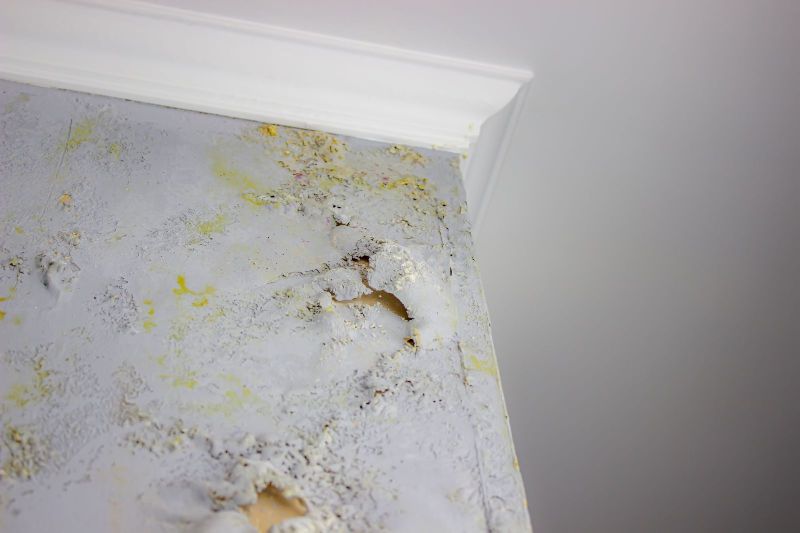Spring is a beautiful season that brings blooming flowers, chirping birds, and warm sunshine. However, it also comes with a potential problem for homeowners: mold growth. Mold thrives in damp and humid conditions, which are often present during the spring season. Therefore, it's essential to take preventive measures to avoid mold growth inside your home. In this blog, we'll discuss some effective ways to prevent mold inside your home this spring.
- Control Indoor Humidity
One of the most critical steps in preventing mold growth inside your home is to control the indoor humidity levels. According to the Environmental Protection Agency (EPA), the ideal indoor humidity levels should be between 30-60%. Higher levels of humidity provide a perfect environment for mold growth. To control indoor humidity, you can use dehumidifiers, air conditioners, or exhaust fans. Also, make sure to fix any leaks or water damage promptly. Moisture from these sources can accumulate and increase the humidity levels inside your home.
- Proper Ventilation
Proper ventilation is essential to prevent mold growth inside your home. Ensure that all rooms have adequate ventilation, especially the bathrooms, laundry rooms, and kitchen. Use exhaust fans to remove excess moisture from these rooms. Also, make sure that your clothes dryer is vented outside your home, and not into an attic or crawl space. It's also a good idea to keep your windows open for a few hours a day to allow fresh air to circulate inside your home.
- Regular Cleaning
Regular cleaning is crucial to prevent mold growth inside your home. Dust, dirt, and other debris can provide a breeding ground for mold. Therefore, it's essential to vacuum and dust your home regularly. Make sure to clean areas that are prone to moisture, such as bathrooms and kitchens, thoroughly. Use a mold-killing cleaner to clean areas that have already shown signs of mold growth. It's also a good idea to clean your air conditioning unit's filter regularly.
- Reduce Clutter
Clutter can impede air circulation, leading to stagnant air, which can provide an ideal environment for mold growth. Therefore, it's essential to reduce clutter inside your home. Get rid of items that you don't need, especially those that collect dust and moisture, such as old magazines and newspapers. It's also a good idea to keep your furniture a few inches away from the wall to promote air circulation.
- Monitor Indoor Plants
Indoor plants can add a touch of nature and fresh air to your home. However, they can also contribute to mold growth if not appropriately maintained. Overwatering your plants can lead to excess moisture, which can provide a breeding ground for mold. Therefore, it's essential to monitor your indoor plants and make sure that they're not overwatered. Also, make sure to remove any dead or decaying leaves from your plants regularly.
- Properly Store Items
Proper storage is crucial to prevent mold growth inside your home. Make sure to store items that are prone to moisture, such as clothes and towels, in dry and well-ventilated areas. Avoid storing these items in damp or humid areas, such as basements and attics. Also, make sure that your storage areas are organized, and items are not packed too tightly. Proper storage allows for air circulation, which can help prevent mold growth.
- Address Water Damage Immediately
Water damage can provide a breeding ground for mold growth. Therefore, it's essential to address any water damage immediately. If you notice any leaks or water damage, fix them promptly. Also, make sure to dry any wet areas within 24-48 hours to prevent mold growth. If you have a basement, make sure that it's properly waterproofed to prevent any water damage.
- Professional Inspection
If you're concerned about mold growth inside your home, it's a good idea to have a professional inspection. A professional mold inspection can identify any potential mold problems and provide recommendations for prevention and remediation. A professional inspection is especially important if you have had water damage or have experienced flooding in the past.
Preventing mold growth inside your home this spring requires a proactive approach. Controlling indoor humidity, proper ventilation, regular cleaning, reducing clutter, monitoring indoor plants, proper storage, addressing water damage immediately, and having a professional inspection are all effective ways to prevent mold growth. By following these preventive measures, you can ensure that your home remains mold-free and healthy for you and your family.

